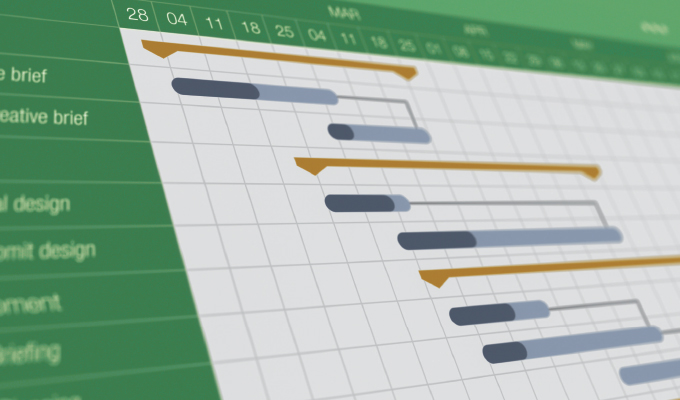Advantages of using construction management software
By Michael Wright
While the construction industry loves new tools and technology for the jobsite, the industry has been much slower to adopt new technology for the office. Many general contractors still rely on spreadsheets or pen and paper to track and manage projects, but technology investment is ramping up, with construction management software becoming a must-have tool for designing, planning, and delivering projects.
Construction firms are embracing project management technology to reduce risk and improve transparency, accountability, and efficiency. With the construction industry showing steady growth and a projected growth rate of 4.5 percent through 2020, construction firms use construction management software to keep pace with this growth and gain a competitive advantage through technology-enabled collaboration, workflow management, mobile capabilities, real-time tracking, and financial management.
COLLABORATION
Cloud-based project management collaboration platforms provide a single location for all contract documents and a place where projects are tracked to make team member communication more effective and increase visibility into project issues, deadlines, and progress.
Requests for Information (RFI) are an excellent example of how construction management software facilitates collaboration. If someone in the field wants to validate information on an access point that needs to be moved, construction management software centralizes communication and provides real-time visibility into responses as relevant team members weigh in on the issue. The software can also keep a record of when the RFI was received, who it was shared with, and all of the collaborative communication related to the issue.
WORKFLOW MANAGEMENT
Project management software provides access and visibility to relevant information to the right people at the right time. This streamlines workflows that are important to project delivery, eliminating much of the back-and-forth communication in emails and phone calls.
Construction management software simplifies and streamlines workflows for processes such as change order management. A common mistake construction firms make on change orders is neglecting to charge the correct negotiated fee on a contract, which can mean loss of profit for the firm. With the functionality to easily generate, share, approve and execute change orders, this software helps construction firms establish consistent workflows that ensure the proper process is being followed for collecting vendor quotes, keeping drawings up to date, and ensuring that the appropriate negotiated fees are charged for change orders.
MOBILE CAPABILITIES
Mobile applications help connect the construction team in the field to the construction team in the office.
Mobile applications allow field team members to capture and share detailed records of their work hours by project, labor authorization, and by labor category which in turn allow superintendents to compile and submit daily reports in a fast, easy, and efficient way.
Mobile applications also allow blueprints to be updated in real time, punch lists to be annotated, and photos to be captured, organized by date and attached to a project. With photo documentation, field crews can confirm that a task was completed or provide a visual explanation of why something was not done. For example, if a foundation was scheduled to be poured but a storm occurred the night before, the mobile app enables field team members to take photos to document the weather event that prevented the scheduled pour.
REAL-TIME TRACKING
The real-time data provided by construction software aids in decision-making on important jobsite issues like costs, schedule, safety and quality, and brings transparency to a project by allowing all stakeholders to collaborate and communicate on projects with real-time updates.
The ability to capture real-time information from the field is a reliable and effective way of tracking productivity and efficiency, arrival and utilization of materials and assets, and vendor presence on the jobsite. All of this real-time data can be captured in daily reports to eliminate errors resulting from compiling these reports from memory at the end of the day or days later which can expose general contractors to risk.
When all external team members, subcontractors, owners and suppliers can access the most recent versions of contract drawings, specifications, answers to RFIs, approved submittals, and pending punch list items, the results are improved productivity, greater transparency and increased efficiency.
FINANCIAL MANAGEMENT
The financial management functionality of project management software enables construction and accounting teams to collaborate effectively online at all stages of a project—from business development to closeout.
These systems make relevant financial information available to field and accounting team members as well as owners, which increases trust and transparency. Cloud-based systems protect this data and reduce the risk of data breaches by eliminating the need for servers and on-premise data storage.
Some of the key financial management capabilities of construction software include ensuring team members are paid correctly according to the scope of work completed, allowing subcontractors to submit monthly billing requests electronically according to the terms of the contract and tracking, tagging, and verifying invoices.
Lien waiver tracking is an excellent example of how financial management in construction software can aid construction firms. Staying on top of the administrative task of managing preliminary notices and collecting lien waivers is critical because disputes over construction payments can result in devastating and widespread impacts to project stakeholders at every level of the supply chain. Construction software can reduce the risk of lien claims and better protect all project stakeholders by streamlining construction payments and providing real-time access to preliminary notices and proof of service.
Closing thought
Project management solutions that integrate accounting and finance functions with field functions and project management tools in one platform can help firms maximize profitability in planning and delivering projects
About the author
Michael Wright is CEO of RedTeam Software. With a background as a commercial general contractor with hands-on experience in all aspects of commercial construction, Wright developed RedTeam as a comprehensive cloud-based solution for construction project and accounting management built by contractors for contractors. For more, visit www.redteam.com.
Modern Contractor Solutions, August 2019
Did you enjoy this article?
Subscribe to the FREE Digital Edition of Modern Contractor Solutions magazine.



